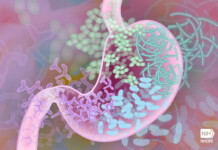By Katherine Beals, PhD, RD, FACSM, CSSD and Breanne Nalder MS RD Candidate, University of Utah — If you watched le Tour de France on the NBC Sports Network last month you probably saw the Dairy Council’s new commercials for chocolate milk showcasing elite athletes touting the beverage as their preferred post-workout recovery drink. In these commercials, athletes such as Mirinda Carfrae (2010 Ironman Champion) espouse the nutritional virtues of chocolate milk and emphasize it’s importance as a recovery drink by referring to it as “my after”.
It’s hard to believe that a beverage that was recently removed from the school lunch programs in school districts spanning from Los Angeles to the District of Columbia is now the recovery beverage of choice for endurance athletes, begging the question– is chocolate milk the perfect recovery beverage or is the Dairy Council capitalizing on the popularity of Le Tour and the summer Olympic games to market their product?
Recovery Nutrition 101
From a nutritional standpoint, recovery involves replacing the energy and nutrients that were utilized during exercise as well as providing the nutrients that the body needs to repair, rebuild and prepare for the next training bout and/or competition. During endurance exercise (particularly of a moderate to high intensity), glycogen stores (muscle and liver) are rapidly depleted. Thus, glycogen replenishment is a critical component of recovery nutrition, particularly when there is less than 24 hours between training bouts and/or competitions (e.g., two-a-day practices, tournaments, stage races, meets involving multiple heats, etc.). It is recommended that athletes need approximately 1-1.2 grams carbohydrate per kilogram of body weight as soon as possible and then hourly for 4 to 6 hours post exercise to maximize the rate of glycogen resynthesis depending on the level of intensity and duration of the competition.
Although not a primary fuel, a small amount of protein is oxidized during endurance exercise and this must also be replaced post exercise to minimize loss of lean tissue and support tissue repair. There is also some evidence to suggest that protein consumed post exercise may expedite glycogen resynthesis. For these reasons it has been recommended that endurance athletes consume 0.4 grams of protein per kilogram of body weight at approximately the same rate and on the same schedule as that for carbohydrate. Recently there has been interest in specific proteins (e.g., whey) as well as individual amino acids (e.g., leucine and arginine) for recovery, although consistent and convincing evidence for their benefits over other proteins or amino acids is lacking.
Finally, the fluids and electrolytes lost during endurance exercise must be replaced. Failure to do so can result in the athlete entering the next training bout already in a slightly dehydrated and or electrolyte depleted state. The American College of Sports Medicine recommends that athletes consume 24-32 fluid oz and for every 1 lb (or 1.5 L for every 1 kg) of body weight lost along with “some” sodium to aid in fluid retention. The ACSM does not specify a specific amount of sodium, rather they simply recommend “…drinks containing sodium such as sports beverages” and qualify that with the statement that “many foods can also supply the needed electrolytes.”
The Hype Surrounding Chocolate Milk
Based on the information presented above then, it would seem then that the perfect recovery food/beverage would provide carbohydrate and protein in approximately a 3:1 ratio as well as fluid and electrolytes. And that brings us to chocolate milk. It just so happens that a pint (16 fluid ounces) of low-fat chocolate milk provides 52 grams of carbohydrate and 16 grams of protein–approximately a 3:1 ratio of carbohydrate to protein. It also provides fluid and more sodium (305 mg of sodium per 16 fl oz), than an equal volume of popular sports drinks. Chocolate milk not only meets the nutritional “profile” of the perfect recovery food/beverage, but it has research to support its effectiveness. Of course, it is worth noting that all the research has been funded by the Dairy Council. Moreover, most of the studies have compared chocolate milk (which contains carbohydrate and protein) to sports drinks (containing only carbohydrate) and/or a flavored “placebo” (containing no carbohydrate or protein), which is really not a fair comparison.
What is the Best Recovery Food/Beverage?
If you enjoy the taste of chocolate milk (who doesn’t really?) and can afford the calories, then it is a good option. It is convenient, relatively inexpensive (especially compared to other sports foods/beverages touted for recovery market), and meets the nutritional requirements for recovery. However, it is not your only option. You can also meet your recovery nutrition needs by consuming a mixture of foods and fluids that provide an approximate ratio of 3:1 carbohydrate to protein along with electrolytes, particularly sodium. Some examples include:
- Greek Yogurt (it has more protein than regular protein) + fruit + granola
- High protein cereal (e.g., Kashi Go Lean, Kashi Go Lean Crunch) + low-fat/non-fat milk with berries
- Sports bar + sports drink + fruit
- Turkey sub (6”) + fruit + sports drink
- Trail mix with fruit and nuts + sports drink
- Pretzels + string cheese or cottage cheese + 100% juice
- Peanut Butter and Jelly sandwich + fruit + sports drink
- Smoothie: 1 cup lowfat vanilla yogurt + 2 Tablespoons peanut butter + 1 banana + 1 cup skim milk, blended with ice
Katherine Beals, PhD, RD is an associate professor in the division of nutrition at the University of Utah. She is a fellow of the American College of Sports Medicine and a Certified Specialist in Sports Dietetics.
Breanne Nalder is an elite cyclist and a Master’s Candidate in the Division of Nutrition at the University of Utah working on her thesis under the direction of Dr Beals.







Wow. Common sense, pragmatism and usefulness in a nutrition article. Fantastic job!
Comments are closed.